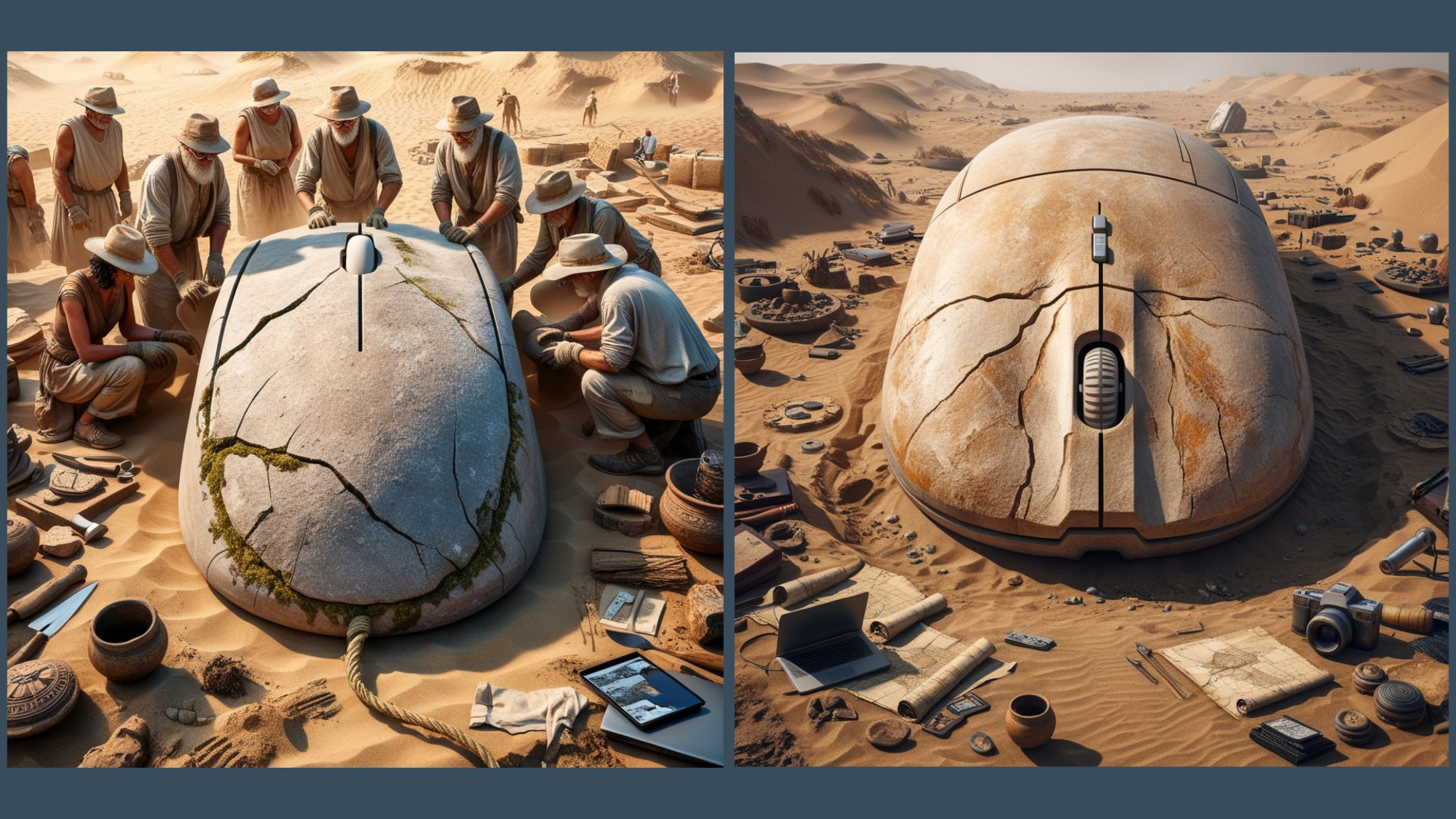
Unbelievable Discovery: Giant Stone Computer Mouse Unearthed in Ancient Tomb Believed to be 3,000 Years Old
 In a groundbreaking discovery that has left archaeologists and historians in awe, a team of researchers has unearthed a massive stone structure shaped uncannily like a computer mouse in what is believed to be the tomb of the legendary figure, Goliath. Dated to be over 3,000 years old, the artifact has fueled speculation and sparked excitement across the fields of archaeology, history, and even technology.
In a groundbreaking discovery that has left archaeologists and historians in awe, a team of researchers has unearthed a massive stone structure shaped uncannily like a computer mouse in what is believed to be the tomb of the legendary figure, Goliath. Dated to be over 3,000 years old, the artifact has fueled speculation and sparked excitement across the fields of archaeology, history, and even technology.
The excavation site, located in the Middle East, was originally thought to contain relics typical of ancient burial sites: pottery, weapons, and skeletal remains. However, what the archaeologists found was beyond anyone’s imagination—a giant, stone-like object carved in the shape of a modern computer mouse, buried beneath layers of sand and rock.
The mouse, measuring approximately six feet in length and four feet in width, features intricate carvings that bear an uncanny resemblance to the buttons and scroll wheel on modern devices. The object is linked to ancient technology theories, suggesting the possibility that ancient civilizations possessed knowledge far beyond what we currently believe.
Dr. Sarah Jennings, a lead archaeologist on the team, described the find as “a mind-bending discovery that challenges our understanding of ancient societies.” She stated, “We’ve found objects from ancient civilizations that hint at advanced craftsmanship, but nothing as eerily modern as this. The resemblance to today’s technology is both exciting and perplexing.”
While some experts believe the stone mouse might be a symbolic artifact representing a tool or weapon, others are inclined to see it as evidence of ancient knowledge of shapes and designs that resemble modern technology. Conspiracy theorists and alternative historians have seized upon the discovery, claiming it as proof of lost civilizations or even extraterrestrial influence.
The tomb itself is believed to be connected to Goliath, the biblical giant defeated by David. While there's no concrete evidence linking this stone mouse directly to Goliath, the location and dating align with the era associated with the legendary figure, adding a layer of mystique to the find.
Social media platforms are buzzing with images from the dig site, with people sharing theories ranging from the plausible to the wildly speculative. Comments range from, “Proof that we’re not the first tech-savvy civilization!” to humorous takes like, “This is what happens when you forget to unplug your devices for a few millennia.”
What’s next for this astonishing discovery? Researchers are carefully analyzing the structure and searching for any markings or inscriptions that might reveal its purpose or origin. There are hopes that further studies will shed light on whether the object was purely symbolic or if it served a more practical purpose for the people who built it.
In the meantime, the “Ancient Mouse” has captured imaginations worldwide, becoming a symbol of the mysteries still hidden within the sands of history. Whether it turns out to be a simple artistic creation or a sign of something more profound, this remarkable artifact is a reminder of humanity’s enduring quest to understand the past—and the tantalizing possibility that history may still hold a few surprises.
Copyright © 2025 Amazing Stories. All rights reserved.